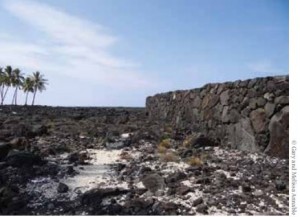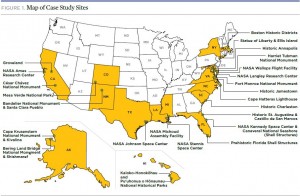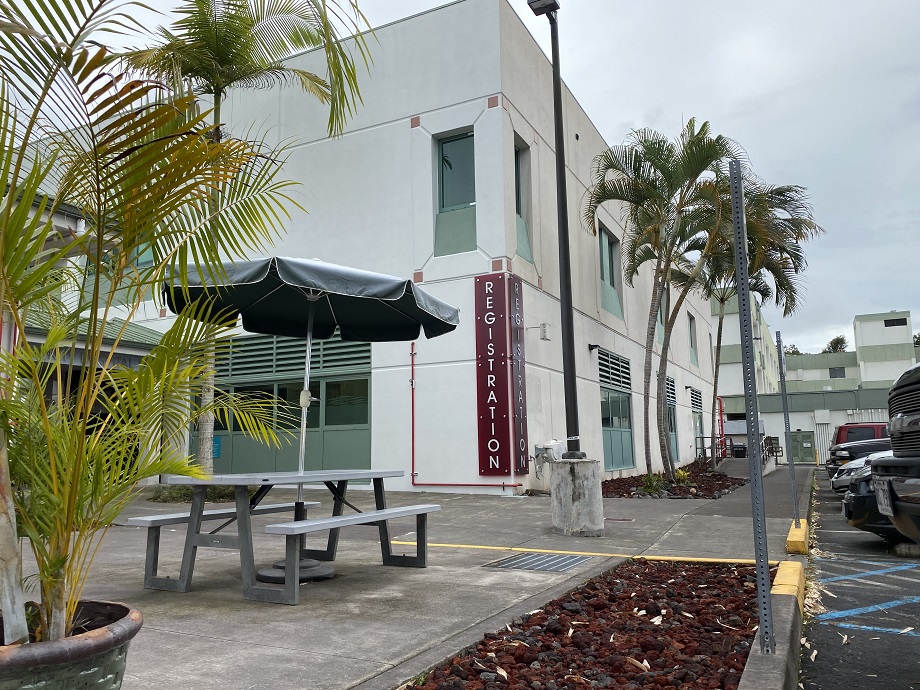Sites Threatened by Climate Change Include Two in Kona
Two National Park Service sites on the western side of the Big Island are on a list assembled by the Union of Concerned Scientists of iconic landmarks and cultural heritage sites threatened by climate change in the United States.
Pu`uhonua o Honaunau and Kaloko-Honokohau national historic parks are vulnerable to coastal flooding linked to rising sea levels, according to the report released tonight.
At the former, numerous sacred places and ancient trails, seawalls, and fish traps are vulnerable to wave action and erosion, according to the report “National Landmarks at Risk: How Rising Seas, Floods, and Wildfires are Threatening the United States’ Most Cherished Historic Sites.”
“From sea to rising sea, a remarkable number of the places where American history was made are already under threat,” the report said. “The geographic and cultural quilt that tells the American story is fraying at the edges — and even beginning to be pulled apart — by the impacts of climate change.”
Many of the 30 sites on the list are part of the National Park Service. The report said the federal agency has identified 85 NPS sites that have already recorded changes attributable to climate change.
At Kaloko-Honokohau National Historic Park, located north of Kailua-Kona, coastal flooding threatens ancient structures used to trap and raise fish.
“The skills associated with building and maintaining fishponds and fish traps were more developed in Hawaii than in any other part of Polynesia, and the examples at Kaloko-Honokōhau, some of which are being restored for use in present-day traditional aquaculture, are among the most important in the islands,” the report said.
The Kaloko fishpond, the `Ai`ōpio fish trap, and the `Aimakapā fishpond were identified in a study by Stanford University and the University of Hawaii as among the park’s historic features most at risk from sea level rise.
The beach fronting the `Aimakapā fishpond, which may be more than 600 years old, is eroding at a rate of 3-4 inches per year.
Researchers say at that rate, the pond could be breached by 2050, and the walls of the fish trap could be submerged by the end of the century.

The Great Wall at Pu`uhonua o Honaunau National Historic Park is 12 feet high, 18 feet wide and nearly 1,000 feet long. UCS photo.
At Pu`uhonua o Honaunau, previously known as “City of Refuge,” the National Park Service has identified the Great Wall, along with the `Ale`ale Heiau temple and other sites as well as two historic sections of trail as cultural resources most vulnerable to sea level rise.
The report said tidal gauges show the sea around the Big Island rising – the result of both global warming and subsidence of the land.
Higher sea levels mean flood waters moving further inland, which can worsen erosion of sand deposits on which some park structures are built.
“Moreover, a rising ocean could exacerbate the impacts of periodic extreme events such as tsunamis (caused by earthquakes), storm surges, and typhoons,” it said.
As the report’s title indicates, not all of the sites mentioned are threatened by rising seas.
Some, such as Mesa Verde National Park in Colorado, are threatened by wildfires resulting from warmer and drier climate.
Others, like Bandelier National Monument in New Mexico, face both wildfires and a heightened flooding risk from intensifying storms.
The Union of Concerned Scientists notes that the report is not a comprehensive analysis of climate change impacts or of threatened sites.
“The stories were chosen because the science behind the risks they face is robust, and because together they shine a spotlight on the different kinds of climate impacts already affecting the United States’ cultural heritage,” the report said.
***Updated 9:04 a.m. Tuesday, May 20.***














